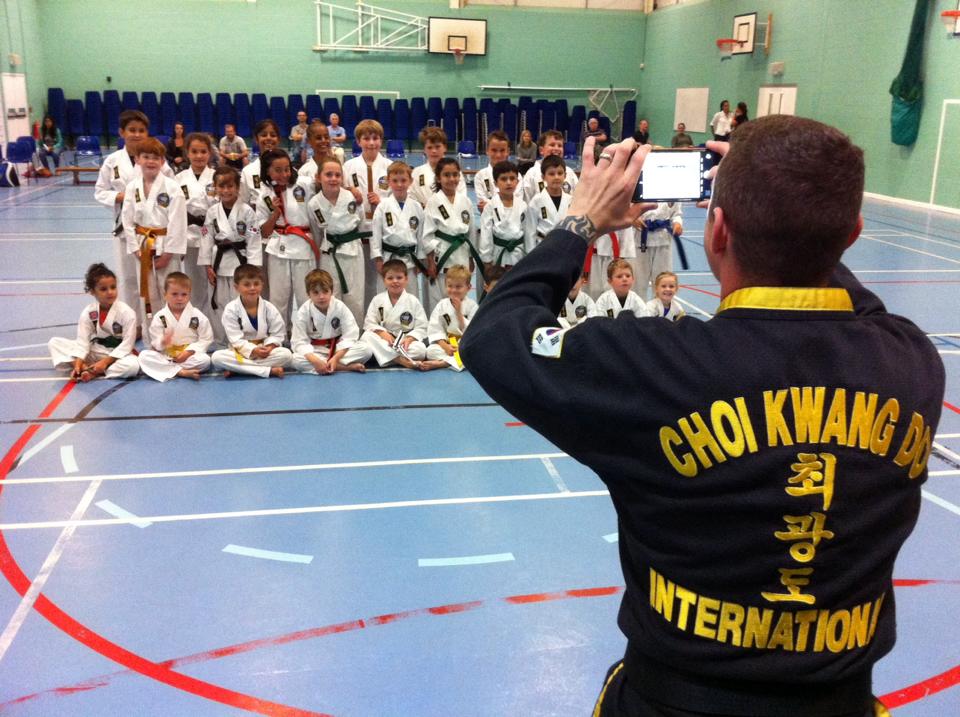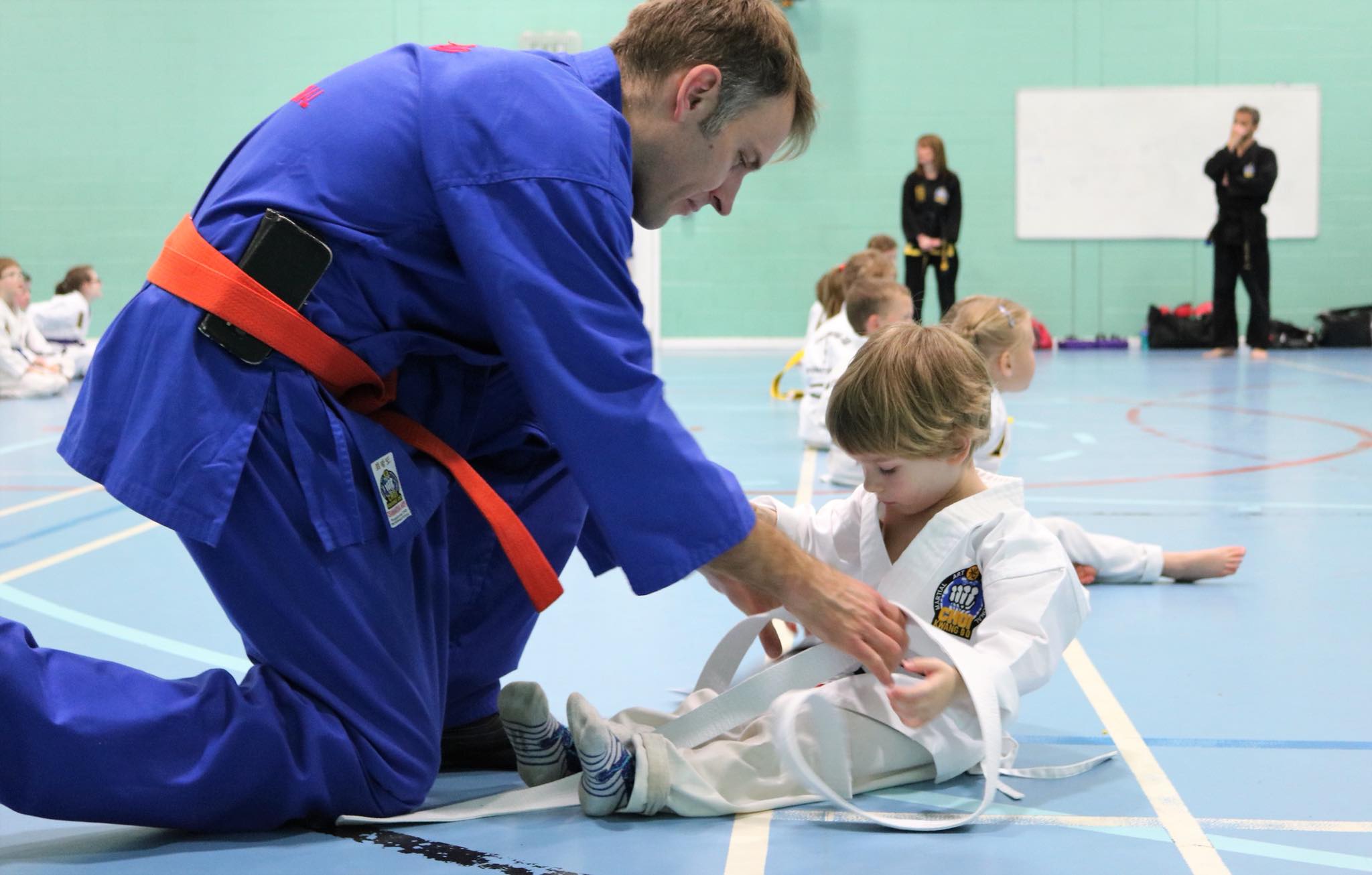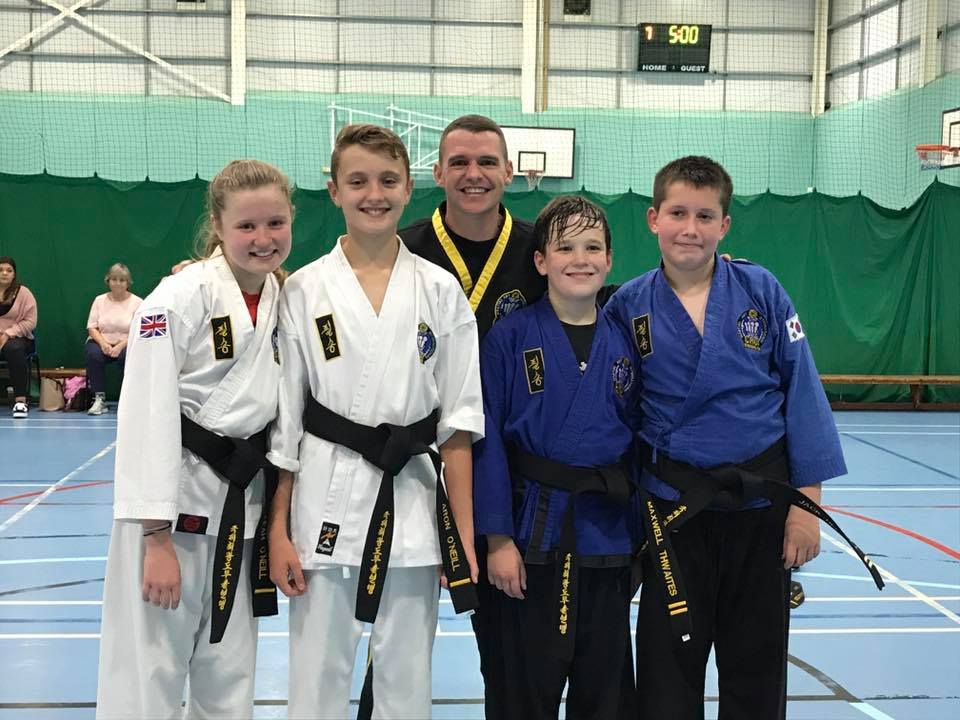Choi Kwang Do
Choi Kwang-Do is a complete martial art and fitness program. It is unlikely that you have heard of Choi Kwang-Do (CKD), for it is one of the youngest martial arts in the world. Started in 1987, it is a living, growing testimony to how modern science can work effectively alongside traditional values, to create a martial art relevant to the needs of 21st century living.
Named after its founder, Grandmaster Kwang Jo Choi (9th degree Black Belt), CKD was inaugurated on his 45th birthday in March 1987. Today, from his international headquarters in Atlanta in the USA, Grandmaster Choi oversees over 450 schools worldwide. CKD is one of the fastest growing martial arts in the world today.
CKD is a highly refined and scientific martial art form and optimum health and fitness programme, distinctively different from all traditional martial arts and fitness programmes in its concept of movement. It should not be put into the same category as the many hundreds of sub-styles of existing martial arts systems or fitness/workout programmes. In fact, Choi Kwang-Do is a modern martial art based on principles derived from the scientific fields of bio-mechanics, kinesiology, psychology, chiropractic and psycho-neurology disciplines.
Grandmaster Choi has been training in the martial arts (and studying health related research) since the age of 12. He is known in the world of martial arts as 'the man with the answers'. He has single-handedly revolutionized the world of fitness programmes and martial arts; over a ten year period, he developed the most complete fitness programme and martial art in the world. Every single movement has been analyzed by scientists and doctors of various disciplines to ensure they are health enhancing (and not damaging) to the practitioners in the short- and long-term. CKD is a series of practical techniques drawing on modern scientific principles and using natural forward motion and follow-through, with no joint lock-out movements, to prevent injury and to improve health.
With competition ruled out, a non-aggressive classroom environment with an emphasis on support and encouragement is created: CKD's emphasis is on learning as an individual. Without the need to feel better or worse than other students and the absence of unhealthy egos, students may well experience a feeling of 'belonging' in CKD that has been described by many students as "my second family". The combination of classroom etiquette and natural techniques makes CKD effective and very safe for the practitioner. As CKD is a non-contact martial art, there is no free-sparring (which creates nerves and is, in essence, competitive). This also means that students can train together, irrespective of age, gender or ability.
Optimum Health
CKD's integrated movements require balance and coordination and its co-ordinated movements have been designed specifically to stimulate the production of neurotrophins – natural substances that stimulate the growth of nerve cells and increase the number of neural connections in the brain. Unlike traditional martial arts, activities or sports that employ homo-lateral movements (using one side of the body), which can be harmful to the body and stressful to the brain, CKD's movements are cross-lateral (using both sides of the body) like a baby's crawl. CKD's techniques work both sides of the body evenly; hands and feet, left and right side, all in co-ordination with the eyes. As a result, the corpus collosum (the 'nerve' that connects the left and right side of the brain), becomes more fully developed. The co-ordinated movements activate both hemispheres of the brain, which heightens cognitive function and increases the ease of learning. CKD's movements assist whole brain development and learning, using movements to develop both the right and left sides of the brain together.
As a child (or adult) performs CKD's co-ordinated movements, messages are sent down our motor neurons to our brains, and the creation of more 'nerve nets' in our body will occur as our body learns movements it has never experienced before. Nerve nets are, in fact, the very essence of learning. As a human being learns a new activity (CKD or playing the piano perhaps), the body grows new nerve nets to support the new learning. Nerve nets are linked to the nervous system in the body, which is, of course, linked to the brain. The body's role in learning is essential for our brains to fully develop, and anyone of almost any age can benefit from training in CKD.
The health benefits of regular training in CKD are immense. The yoga-based warm-up stretches muscles and tendons to minimize the risk of strains and tears during training. These regular gentle exercise stretches also improve flexibility long-term. Regular cardiovascular exercise regulates blood pressure and cholesterol and so reduces the risk of heart disease and stroke. Control of weight reduces the risk of developing diabetes, whilst the weight-bearing exercise reduces the risk of osteoporosis and fractures. Regular physical exercise also reduces the effect of ageing on the heart, muscles, joints and even brain, and reduces the risk of injuries to muscles, tendons and joints from daily wear and tear. With regular training, stamina and general cardiovascular fitness is increased, whilst muscle strength is improved resulting in more stable joints. Exercise can also improve mood – the 'feel good factor' boosts the immune system and has a calming effect on stress, due to the release of natural morphine like hormones called endorphins.
Though modern science is helping us to appreciate the role of the body and the need for movement in learning, modern life may be making it harder than ever to benefit from this discovery. CKD's students will immediately discover that CKD movements profoundly improve learning, optimum health and creative stress management.
Understanding Self-Defence
CKD's unique system has been designed for the smaller, less powerful man or women to develop powerful techniques; It is based on using the body's natural movement, with bio-mechanical techniques making the most of body weight and follow-through to achieve the required impact. Physics proves that the speed of a punch or kick quadruples the 'impact shock' on contact – in essence, speed generates power. In CKD, whatever your size, you will become fast and very powerful.
CKD has specific drills to develop your speed, your flexibility, your timing, your punching power, your concentration, your accuracy and your co-ordination and balance. These skills and others are developed with the use of equipment for your safety. Again, there is no free-sparring and again, CKD is non-contact. You come to class to learn to look after and take good care of yourself and not to learn how to take a punch or kick or to come away bruised in any way! Also, in free-sparring (in kickboxing or karate) you train to last for rounds or to score points: this programs the practitioner to pace themselves and to hold back.
In a real life situation, you have ten or fifteen seconds, two or three punches and it's all over; you want your techniques to be devastatingly powerful every time. If you ever have to defend yourself (CKD promotes non-violent resolutions to conflict), you must be programmed to react instinctively to defend yourself – effectively and fast.
A Choi Kwang-Do Class
The Warm-Up
The stretching in both Karate and Kung-Fu is almost always proceeded by an aerobic warm-up, such as running or skipping, with the idea the muscles or tendons have to be warm before they can be stretched. The actual stretching can be quite vigorous, often with partners and against resistance. In contrast, the CKD stretch is based on yoga movements and the muscles do not need to be pre-warmed. The stretches are done slowly with deep breathing in a relaxed manner, thereby releasing any muscular tension and increasing flexibility. These controlled movements prevent the type of over-stretching injuries that can be experienced in other martial arts. An additional benefit of the yoga-based warm up is the relaxation and calming of the mind before training, similar to meditation.
Biomechanics
The main difference between CKD and other martial arts and fitness programmes is in its biomechanics or principles of movement. Everything from the stances to the punches is done in a relaxed manner. The more natural, more relaxed, curved, rhythmic movements encourage flow from one technique to the other. This results in faster blocks, faster stance transitions and faster combinations, thereby increasing the speed and power of these techniques and reducing the stress on the body and mind.
Syllabus
All the aspects of the CKD syllabus fit together and complement each other. The movements learned in basics, patterns, combinations and defence drills can be directly applied to shield and focus mitt training and actual self-defence situations. This differs from other martial arts syllabuses, in which the low stances and rigid blocks and punches practised in basics, contrasts with the higher stances and more fluid blocks and punches that need to be used in a real-life situation. There is no such conflict, or 'negative transfer' in CKD – the movements practiced in all aspects of the syllabus is applicable to a self-defence situation, a concept known as 'positive transfer'.
Philosophy
Gone are the harsh regimes, punishments and humiliations you may experience in some traditional arts – they are replaced with mutual support and encouragement. CKD is taught in a friendly, family-orientated atmosphere, and in a fun and easy-to-learn manner.
The development of character and mental strength based on CKD's tenets is considered the most important overall goal in CKD training, along with the attainment of proper technique. The principles are:
- Humility
- Integrity
- Gentleness
- Perseverance
- Self Control
- Unbreakable Spirit
Personal Development
Here is where CKD rises above all other sports activities. CKD is taught according to the individual's needs and level of skill. There are empowering programmes for all individuals. The study of the Martial Arts at CKD emphasizes the positive attributes of students, whilst making allowances for each individual's personal limitations. Everyone is welcome at CKD.
Students will find themselves to be more relaxed and calmer in dealing with some of life's challenges. They will have better self-control, personal self-discipline and an increased ability to stay focused on their objectives.
Our goal is to create champions in life, not in the ring! To help our students to develop, socially, mentally, physically and emotionally, to help them to reach their potential and to encourage them to live happy, exciting and fulfilling lives.




